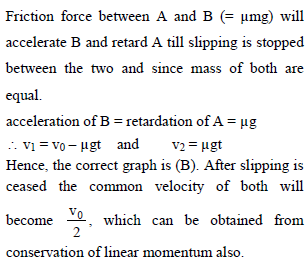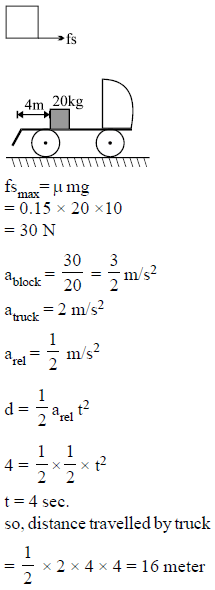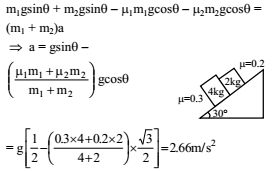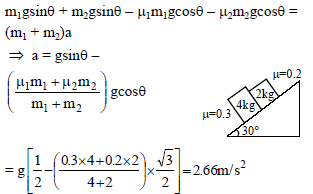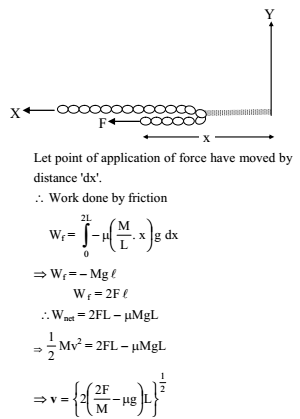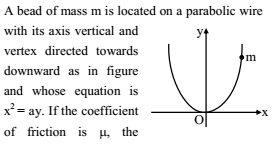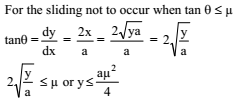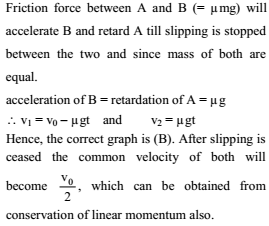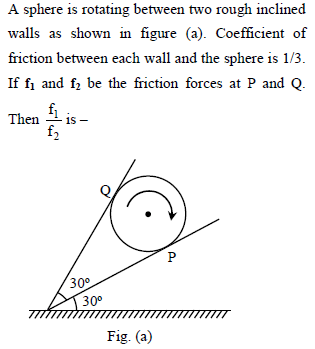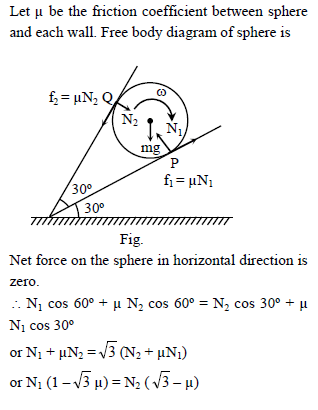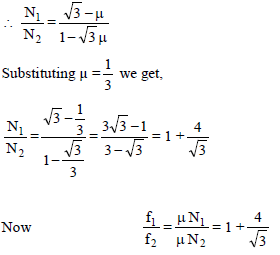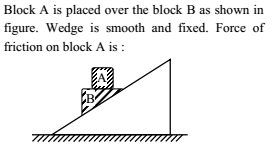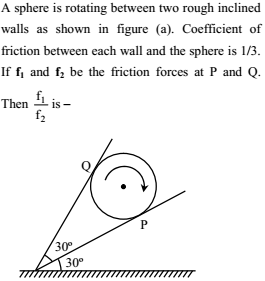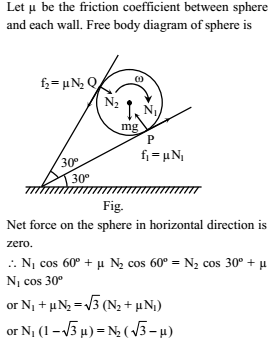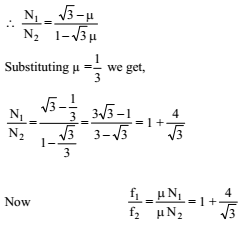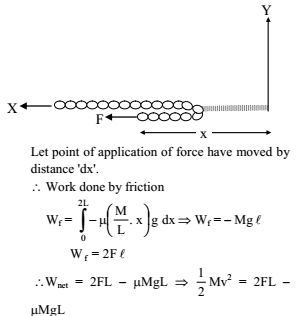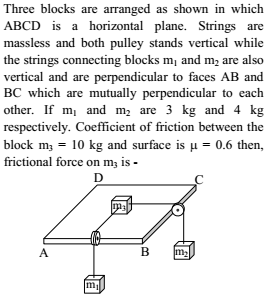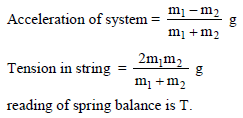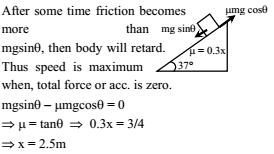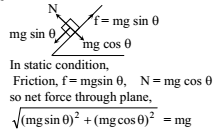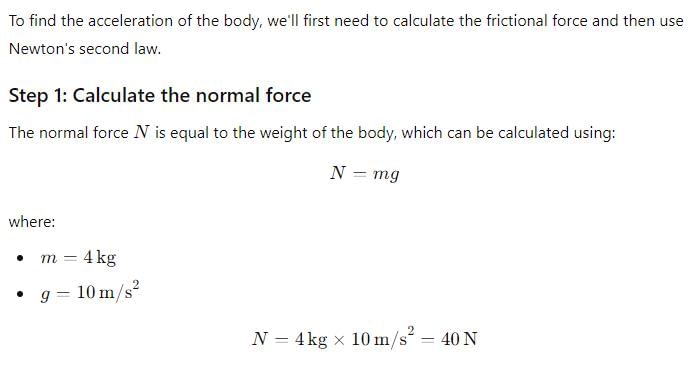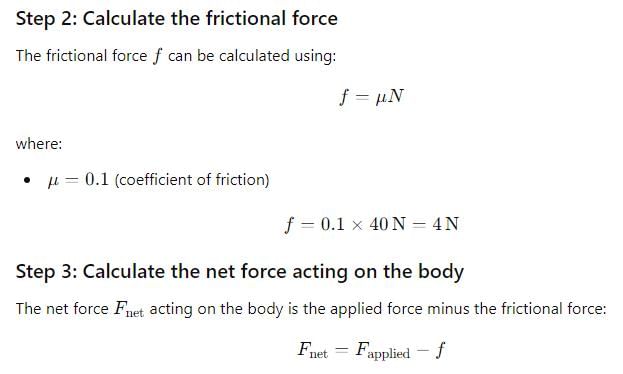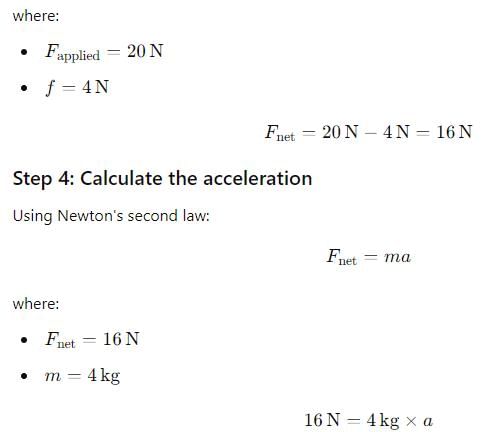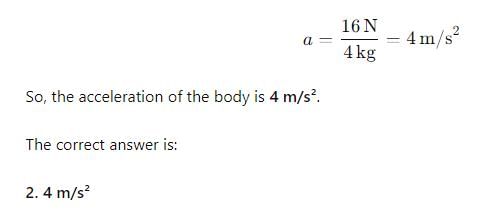Chapter Test: Friction - 1 - JEE MCQ
30 Questions MCQ Test - Chapter Test: Friction - 1
A block A is placed over a long rough plank B of same mass as shown in figure. The plank is placed over a smooth horizontal surface. At time t = 0, block A is given a velocity v0 in horizontal direction. Let v1 and v2 be the velocities of A and B at time t. Then choose the correct graph between v1 or v2 and t :


The rear side of a truck is open and a box of mass 20kg is placed on the truck 4 meters away from the open end. Coefficent of friction between truck and block is 0.15. The truck starts from rest with an acceleration of 2m/sec2 on a straight road. The box will fall off the truck when truck is at a distance from the starting point equal to: (g = 10 m/s2)
Two blocks, 4 kg and 2 kg are sliding down an incline plane as shown in figure. The acceleration of 2 kg block is -


Two blocks, 4 kg and 2 kg are sliding down an incline plane as shown in figure. The acceleration of 2 kg block is -
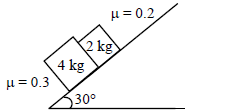
A chain of mass ‘M’ and length ‘L’ is put on a rough horizontal surface and is pulled by constant horizontal force ‘F’ as shown in figure.
Velocity of chain as it turns completely: (Coefficient of friction = μ)

The conveyor belt is moving at 4 m/s. The coefficient of static friciton between the conveyor belt and the 10 kg package B is μs = 0.2. Determine the shortest time in which the belt can be stopped so that the package does not slide on the belt.
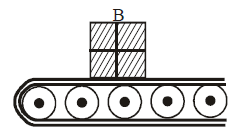
A block A is placed over a long rough plank B of same mass as shown in figure. The plank is placed over a smooth horizontal surface. At time t = 0, block A is given a velocity v0 in horizontal direction. Let v1 and v2 be the velocities of A and B at time t. Then choose the correct graph between v1 or v2 and t :
A chain of mass ‘M’ and length ‘L’ is put on a rough horizontal surface and is pulled by constant horizontal force ‘F’ as shown in figure. Velocity of chain as it turns completely: (Coefficient of friction = μ)

A block A of mass 2 kg rests on another block B of mass 8 kg which rests on a horizontal floor. The coefficient of friction between A and B is 0.2 while between B and floor is 0.5. When a horizontal force 25 N is applied on B, the frictional force acting between A and B is
In the figure, mA = 2 kg and mB = 4 kg For what minimum value of F, A starts slipping over B: (g = 10 m/s2)

A particle of mass m is released from point A on smooth fixed circular track as shown. If the particle is released from rest at t = 0, then
variation of normal reaction N with (θ) angular displacement from initial position is -
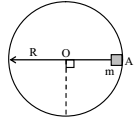
In the arrangement shown, the pulleys are fixed and ideal, the strings are light, m1 > m2, and S is a spring balance which is itself massless. The reading of S (in units of mass) is -
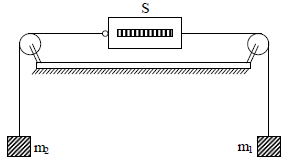
The block A in Figure weighs 100 N. The coefficient of static friction between the block and the table is 0.25. The weight of the block B is maximum for the system to be in equilibrium. The value of T1 is
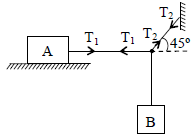
A block is resting on a horizontal plate in the XY plane and co-efficient of friction between block and the plate is 'μ'. The plate begins to move with velocity u = bt2 in X-direction. At what time will the block starts sliding from plate -

A block of mass m is placed at rest on an inclined plane of inclination θ to the horizontal. If the coefficient of friction between the block
and the plane is μ, then the total force the inclined plane exerts on the block is-
A piece of ice slides down a 45° incline in twice the time it takes to slide down a frictionless 45° incline. What is the coefficient of friction
between the ice and incline ?
Starting from rest, a body slides down a 45° inclined plane in twice the time it takes to slide down the same distance in the absence of
friction. The coefficient of friction between the body and the inclined plane is
If the lower block is held fixed and force is applied to P, minimum horizontal force required to slide P on Q is 12 N. Now if Q is free to move on frictionless surface and force is applied to Q, then the minimum force F required to slide P on Q is –

Two bodies of equal masses (M) are connected by a string and are kept on rough horizontal surface as shown in the figure. The coefficient of friction between the blocks and the surface is µ. If 0 < F1 – F2 < 2µMg, then choose the correct statement .

A body rests on an inclined plane and the angle of inclination is varied till the body just begins to slide down. The coefficient of friction is  . What is the angle of inclination?
. What is the angle of inclination?
A block of mass 2kg rests on a plane inclined at an angle of 30o with the horizontal. The coefficient of friction between the block and the surface is 0.7. The frictional force acting on the block is
A particle moves in a circle of radius 0.30m with a constant speed of 6m/s. Its centripetal acceleration is
When a wheel rolls on a level road, the direction of frictional force at the point of contact of wheel and ground is:
A force of 20 N is applied on a body of mass 4 kg kept on a rough surface having coefficient of friction 0.1. Find acceleration of body. Take g = 10 m/s2


